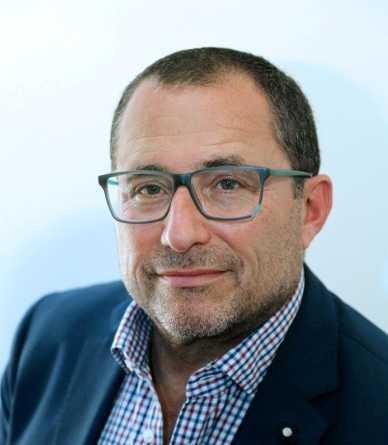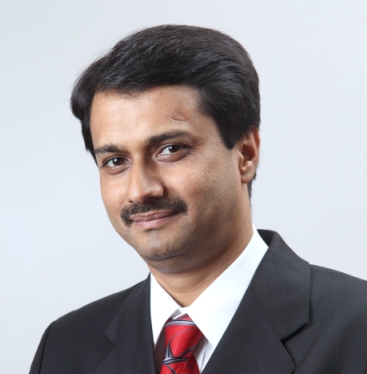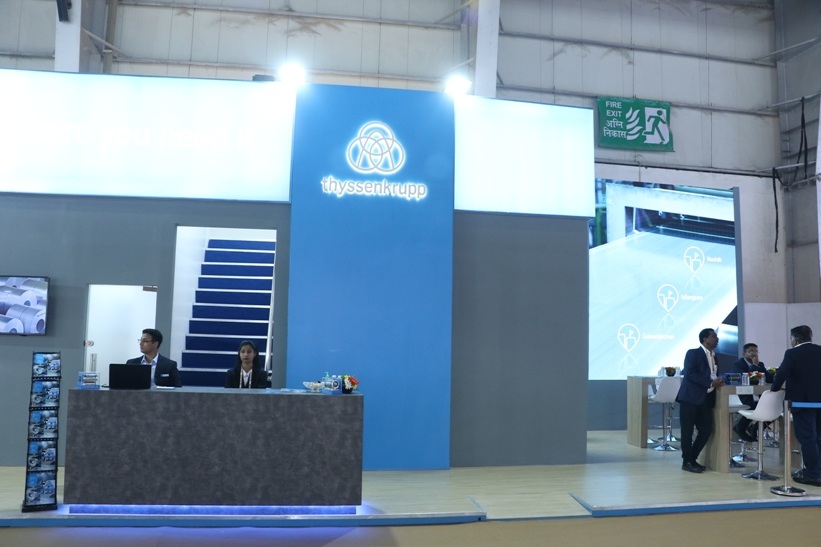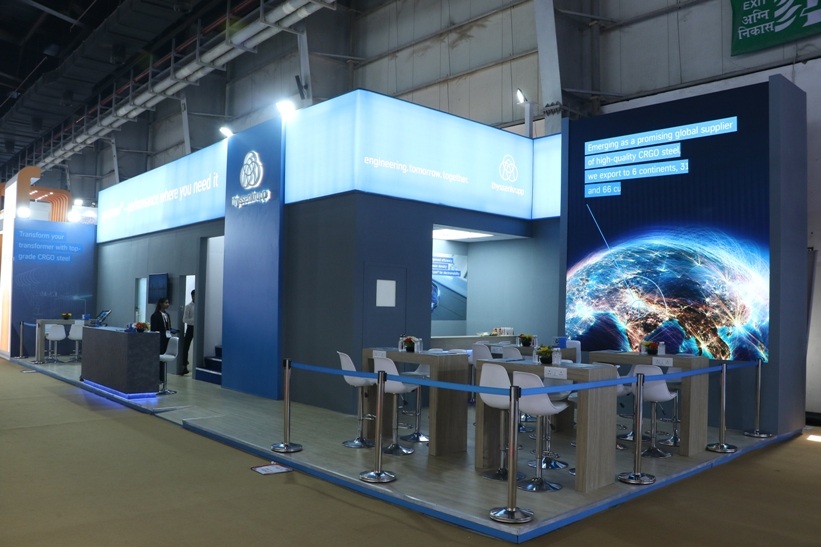CRGO steel is critical to India’s de-carbonization goals: Thyssenkrupp Electrical Steel
- March 17, 2023


ThyssenKrupp Electrical Steel India Pvt Ltd (TKES India) occupies a special position in India’s electrical equipment landscape as it is the sole domestic producer of cold rolled electrical steel, popularly known as cold rolled grain oriented (CRGO) steel, and a key component in transformers. In an interaction with T&D India during Elecrama 2023, Georgios Giovanakis, Chief Executive Officer, Thyssenkrupp Electrical Steel GmbH and Joydeep Bhattacharjee, Managing Director, Thyssenkrupp Electrical Steel India Pvt Ltd, discussed several aspects of CRGO steel – its significance in helping India attain its “green” goals, and how TKES India is committed to meet the country’s requirements of this critical material. An interview by Venugopal Pillai.
Can we start by understanding your CRGO steel production capabilities worldwide?
Georgios Giovanakis: We produce CRGO steel worldwide through three sites – France, Germany and India. Our India plant is located at Nashik in Maharashtra that produces only CRGO steel.
What is the capacity of your Nashik plant, and how does it compare with India’s total CRGO steel consumption?
Georgios Giovanakis: We estimate worldwide capacity and consumption of CRGO steel at around 3.2 to 3.5 million tonnes, per year. China is by far the biggest market, followed by US and India. The consumption in India is estimated at 300,000 tonnes per year. We have a share in India, with our Nashik plant, of around 50,000 tonnes per year.
Incidentally, we did some important investment in our Nashik plant in 2022 and upgraded quality and also capacity.
Does the Nashik plant cater largely to the domestic market?
Georgios Giovanakis: All our three global sites are supporting worldwide demand. Certainly, our main footprint with our Nashik plant is the Indian market but we are also exporting to 22 countries across six continents.
It is important to know that CRGO is not just CRGO; it is divided into top grades and conventional grades. A lot of developments have taken place on the technological front worldwide in improving the quality of CRGO.
Top grade applications are getting more and more important as energy is getting more and more expensive — especially, in Europe. Therefore, the better the material is, the more you can save on energy costs and reduce CO2 emissions. In terms of our CRGO product quality, we have made significant developments in our Nashik plant.
Can one presume that transformers is the major application for CRGO steel?
 Georgios Giovanakis: Yes, I would say 98 per cent of CRGO steel goes into the transformer business. This is the main application. It is actually the transformer ecosystem that includes transformers and its accessories like rectifiers. The important point that we see in the past 2-3 years are mega trends with respect to climate change and other related issues. This includes e-mobility and the switch to increasing use of renewable energy and less fossil energy.
Georgios Giovanakis: Yes, I would say 98 per cent of CRGO steel goes into the transformer business. This is the main application. It is actually the transformer ecosystem that includes transformers and its accessories like rectifiers. The important point that we see in the past 2-3 years are mega trends with respect to climate change and other related issues. This includes e-mobility and the switch to increasing use of renewable energy and less fossil energy.
We see that for the years to come, a six-fold increase in the use of renewable energy worldwide. For this, you will need to install new efficient and smart grids that will need large amounts of CRGO steel.
We believe that the Indian market is by far the fastest growing. We will need to accelerate – both globally and in India – to get closer to climate-neutrality goals agreed in Paris 2015.

We observe that India’s attempts to make CRGO have not really fructified. What is your take on the matter?
Joydeep Bhattacharjee: We are pioneers in grain-oriented steel in India. Producing CRGO steel is a very different ball game. For any other variety of steel, you have a simpler production process in the downstream operations that would typically include – hot rolling, cold rolling, annealing, coating or galvanizing. However, in CRGO steel, it has multiple extra processing at very high temperatures as well as very unique equipment. The steel needs a lot of R&D, competence, and discipline in production. These qualities cannot be built overnight. At the end of it, the production window of parameters of CRGO is very narrow. It needs a lot of engineering and quality control. These could be some of the reasons why prior to thyssenkrupp, India could not see through production of CRGO steels though there were attempts earlier too.
Investment in CRGO – for per tonne output compared to other flat steel capital expenditure (capex) – is very high. CRGO is not a volume business but about producing niche product with a very high technology for the needs of energy efficiency and decarbonization.
Our Nashik plant’s capacity of 50,000 tonnes might look small, but very complex to get high quality.
Georgios Giovanakis: I cannot comment on if and why India did not succeed in its attempts to make CRGO steel earlier. But I see that with the high willingness of climate change, the Indian government will push more than in the past.
We have also been contacted by the Indian government, to discuss capabilities of thyssenkrupp in supporting the desire to become independent in its CRGO needs.
We understand that there are very few CRGO steel producers worldwide, and that the technology is fiercely guarded.
 Joydeep Bhattacharjee: Every CRGO mill in the world has patented its technology. As customer requires upgrades, CRGO mills have to upgrade their processes and technology. The extent of these technology upgrades in the CRGO world is phenomenal.
Joydeep Bhattacharjee: Every CRGO mill in the world has patented its technology. As customer requires upgrades, CRGO mills have to upgrade their processes and technology. The extent of these technology upgrades in the CRGO world is phenomenal.
Georgios Giovanakis: This is why there are very few producers of top grade CRGO steel worldwide! It is a know how-driven product and not a commodity product like carbon steel that has a global manufacturing capacity of over 2 billion tonnes.
We also have a perception that although India is one of the biggest consumers of CRGO steel in the world, the market is not protected. Due to this, the attractiveness for investors to put money here might be limited.
We, thyssenkrupp, have invested heavily in making top grade electrical steel in India. Consumers, on the other hand, can freely import the product. There is no protection or shield for the local manufacturers. China, USA, and Europe to some extent, are all protected markets.

There is an ongoing debate on the willful use of inferior or scrap CRGO in Indian transformers. At the same time, a section of the industry believes that scrap CRGO is not inferior as CRGO is a non-ageing product. Please share your insights.
Joydeep Bhattacharjee: CRGO is a non-ageing product but it needs to be handled well. If not, the magnetics can deteriorate rapidly. Each sheet has to be handled with utmost care when we get CRGO in our labs. Remember, it is a test of a very thin sheet and not the test of a classical steel product. Incidentally, we have a NABL-accredited laboratory where we do testing not only for our customers but also for other stakeholders.
Concerning the second portion, once it is fitted into a transformer core and then you rip it apart to try to use, you might be compromising on the magnetic and other physical properties and so one has to be very careful. However, we also have standards for transformer making which governs use of material too.
That is why we are thankful to the government for introducing mandatory BIS registration. This will help in improving the overall quality of CRGO steel used in Indian equipment.
Are you getting any fiscal relief from extant government policies?
Joydeep Bhattacharjee: For the past three years, we have got zero import duty concession from the government for all our raw material. It is important to note that the pre-material has to come from the mother mills directly due to technological reasons; it cannot be bought from the open market, as we would for other steel products say in production of coating and galvanizing. We had a lot of discussions with the government on these topics and finally we did get support by way of zero BCD (basic customs duty) and fortunately, in this year’s Budget, the finance minister announced its extension for one more year. However, we need this on a continuous basis and this is one of the many supports that we look forward to.
Have these concessions yielded any advantage in terms of production cost?
Joydeep Bhattacharjee: It is not a matter of cost advantage; it is about being fair to local producers. There are importers that freely bring in finished goods (CRGO steel) from global suppliers, through FTA or otherwise too despite their value addition happening in their respective countries. We are creating jobs in the country and making a highly specialized product. Going ahead we will need to make investments to improve the product as well increase capacity. And I said earlier, CRGO is very capital intensive and needs huge amount of funds. At our Nashik plant, we undertake significant R&D activities on a continual basis too.
Georgios Giovanakis: I think if you are a local producer and someone is importing the product, I can understand import duties. But if you are the only domestic producer that is creating jobs and helping the country’s green transition, I don’t understand why import duty should be paid. As long as there is only one domestic producer, the import duty concession (which we now have for one more year) should in fact be permanent.
Tell us about the growth of your Nashik plant in the field of CRGO steel.
Georgios Giovanakis: What is important is the technical turnaround in the Nashik plant. In 2018, we started converting the plant into a CRGO steel plant. Before that, we produced other products like carbon steel and non-grain oriented electrical steel. For me, it was amazing as this entire transition was done during the COVID time. That was a very great achievement. But also, the thyssenkrupp group had a clear picture of what we wanted to achieve in India. Thanks to the local management, we made a fantastic turnaround.
How do you see the years ahead for thyssenkrupp’s Electrical Steel business in India?
 Georgios Giovanakis: Last year, the government discussed with us the plans of where it wants to take the country by 2047, when India completes 100 years of its Independence. Also, we were shown the plans of achieving climate neutrality by 2070. You need huge infrastructure support and also renewable energy. We believe and I confirm what I said earlier that India will be the fastest growing market in the world, if all plans are on schedule.
Georgios Giovanakis: Last year, the government discussed with us the plans of where it wants to take the country by 2047, when India completes 100 years of its Independence. Also, we were shown the plans of achieving climate neutrality by 2070. You need huge infrastructure support and also renewable energy. We believe and I confirm what I said earlier that India will be the fastest growing market in the world, if all plans are on schedule.
Also, grain oriented electrical steel will be central to the country’s green transformation. Without our product, it will be much more difficult – not only with respect to thyssenkrupp Electrical Steel India but any other supplier, for that matter.
Joydeep Bhattacharjee: Today, I think the government is rolling out a lot of good initiatives – net zero goals, energy transition, etc. This would bring in new grids that would need new transformers. We should therefore be able to pose ourselves with a good market footprint. We also have the right product. Today, whatever product we produce in the three plants globally, we have the same quality. There is nothing lacking in the product that we supply from the Nashik plant.
I would also like to add that though thyssenkrupp is a global brand, our division as an Indian company is ready to support the initiatives towards the spirit of Make in India employing Indians. Further we see a great potential with this product of CRGO as the country is on the road towards rapid development .
Georgios Giovanakis: I must add that we are thankful for the support that we got from the government; it speaks about the commitment that the government has towards nation building.


